35 Photos Of Lynda Carter's Most Iconic Moments
By | December 9, 2022
Lynda Carter, iconic actress, singer and activist who found fame playing Wonder Woman in the 70s
Bursting onto television screens in 1975, Lynda Carter is best known today for her work on Wonder Woman, a television adaptation of DC's first female superhero comic book series. She quickly became a favorite with fans who enjoyed her earnest portrayal of the iconic character, putting her own twist on Wonder Woman's evolution through her work on the series. When the show ended in 1979, Carter moved on to make a name for herself in music, film and television, becoming famous for her elaborately produced, star studded musical variety shows.
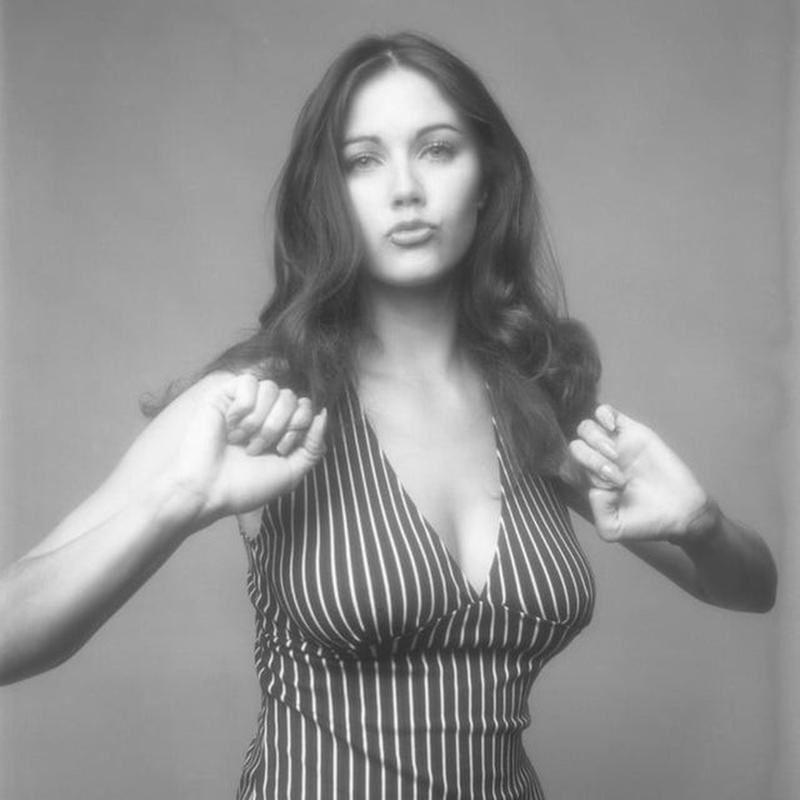
From her start in the mid-60s playing school dances with high school bands to her surprising turn as a teenage touring musician, Carter has had a very varied and busy career in entertainment. Talented and versatile, Carter made dozens of television movies over the years, starring in a few blockbuster films along the way. She also played the lead in three TV shows, although Wonder Woman was by far her most successful and well-known piece of work. A lifelong activist, Carter is a staunch supporter of the LGBTQIA+ community and fundraises for several charitable causes.
Carter, one of three children, has a brother, Vincent, and a sister, Pamela

Born on July 24, 1951 in Phoenix, Arizona, Lynda Jean Cordova Carter showed an innate talent for music and dancing from a very young age. Carter came from a diverse cultural background and, along with her siblings, was exposed to both Latin and European music growing up. Her mother, Juanita Cordova, was of Spanish, French and Mexican heritage, while her father, Colby Carter, had a Scots, Irish and English background. At the age of five, Carter was chosen to perform on Lew King's Talent Show, a nationally syndicated program. It was the start of a long and very successful career.
In 2022, Carter noted that she started performing at a young age, even if it was just for her family:
I actually started, like many of us do, making up shows and things and making my poor family sit there through the four acts of a play or musical. I sang in everything I possibly could. Like, 'I’ll do it!' Then I joined a band at 14 and was singing in bands until I was 17.
By the time this high school yearbook photo was taken, Carter was already a working musician

By the time Carter was in high school, she was already a talented singer, keen to pursue a career in music. Her first band, formed with three friends from school, was called Just Us. Influenced by their shared heritage, the band performed Latin-inspired percussive music. They used an eclectic mix of instruments including the African marimba and the Afro-Cuban conga drum, along with acoustic guitar and the double bass. They played a few school dances but didn't stay together long. At the age of 15, Carter snagged her first professional gig, singing for tips at a local pizza joint.
Carter's first professional gig came when she was 16 and started touring with The Relatives

When she was just 16, Carter went on tour for the first time, joining her cousins' band, The Relatives. Their drummer was none other than Gary Burghoff, who would later gain worldwide fame for his role on M.A.S.H. Carter moved to Las Vegas with the band for three months, where they were booked as the opening act at Las Vegas' famous Sahara Hotel and Casino Lounge. Carter recalls having to surreptitiously make her way to the stage via the kitchen entrance so as not to break the rules against minors being in a casino. In 2016, Carter told the New York Times:
We were just a local band. I was doing some writing and plugging along, as every other girl who goes to L.A. does, and then I finally got Wonder Woman.
Carter appears on the liner notes for It's a Sure Thing although she left the band years earlier

Carter completed high school after her stint with The Relatives, starting college at Arizona State University that fall. She didn't stay long. Soon after she arrived, she won the title of "Most Talented" at a college competition. Encouraged by the surprise win, Carter quit college to pursue her real passion, a career in music and entertainment, and started auditioning for local bands. Soon after, in 1970, she was hired as lead vocalist by the newly formed group, The Garfin Gathering. After going on tour with the band in Nevada for two years, Carter quit to focus on acting.
Carter's win at the Miss World USA 1972 competition launched her into a successful acting career

Returning once again to her home in Arizona, Carter took a chance and entered the Miss Arizona 1972 pageant where she placed first, ultimately going on to win Miss World USA 1972. Carter didn't think anything of the pageant world at first, but she's since explained that it changed her life forever. She said:
I had stopped singing on the road and gone back to Arizona to regroup. I didn’t want be a singer in a group on the road, and I was going to go study acting. And then this Miss World contest fell in my lap. I’d never been in a beauty contest, but three weeks later, I was walking down the runway at the Hampton Coliseum. So at that time, I met this wonderful woman, Cynthia Greer. She was Miss Tennessee, and I was Miss Arizona. All these years later, we have stayed friends. And she is now about to marry my record producer.
As the winner, she became America's representative at the next stage in the pageant series, Miss World 1972, where she ranked in the top 15. Encouraged by her success and now nationally recognizable, she decided to go to New York to seriously pursue her acting career. But first, she had to fulfill her commitments as the Miss World USA titleholder.
Carter, as Miss World USA, visits the National Naval Medical Center with Bob Hope and his troupe

As the new Miss World USA, Carter was contracted to carry out a year-long series of nationwide engagements and media appearances, acting as a goodwill ambassador for the Miss World organization. Her duties included bringing awareness to charitable organizations, giving speeches promoting humanitarian causes, and supporting fundraising events. Each Miss World winner also has to choose a cause that is important to her to focus on as part of her duties. Carter chose the care of wounded veterans returning from the still running Vietnam War, one of the deadliest and most destructive conflicts of the 20th century.
Carter didn't have to wait long to get her start in television, landing her first role in 1974

After spending most of 1973 carrying out her Miss World duties, Carter moved to New York. Finally ready to follow her dream, she enrolled in acting lessons at some of the most prestigious schools in the city. Along the way, she crossed paths with other young actors who would one day become big names in the industry, such as Lee Moonves, the future president of CBS. The acting lessons paid off pretty quickly. Carter landed her first role in 1974 on Nakia, a ground-breaking police procedural that centered around a Native American cop working in a small New Mexico city.
Carter landed a small role in a Season 1 episode of Starsky and Hutch in early 1975

Carter was cast in a few more shows over the next year, playing small supporting roles. Unfortunately, it didn't pay much and by the summer of 1975, she was almost broke. Around that time, her agent sent her on an audition for ABC's The New Original Wonder Woman. Carter matched the comic book character's look and blew away the casting director with her stellar audition. It was an extremely lucky break for the young actress. Just days before she got the call offering her the part, Carter had actually decided to give up on acting and move home to Arizona.
Cloris Leachman as the Queen of Themyscira alongside Carter as the Amazon Princess Diana, 1975

Carter was over the moon to get the job. She later recalled that at the time, she was down to her last 25 dollars. Filming on the feature-length pilot started almost immediately and The New Original Wonder Woman was released on November 7, 1975. Unlike its predecessor, it was an instant hit. Audiences and critics loved Carter's performance which rang true to the way the character was originally written in the Marvel comics. Elated by the pilot's success, ABC ordered two more film length television episodes which aired in April 1976, followed by an order for a further 11 short episodes. However, Carter was warned by producers that there would be pit falls to playing a character like Wonder Woman. She told Glamour:
At the time, there were no pretty women in leading roles on TV, just funny women like Carol Burnett and then Laverne and Shirley. The producers said, 'Now, you understand women aren't going to like you because you're sexy.' But I tried to play the part for real. This is what her life is—she's just trying to do the right thing. I loved everything about playing her, and I never once thought she'd remain iconic for 40 years!
Carter added her own twist to Wonder Woman canon, inventing her classic spin move for the show

The first season of Wonder Woman includes the three film-length tv episodes and the first thirteen serial episodes which aired during the fall of 1976. Carter actually invented the iconic spinning move that Diana Prince uses to change into her alter ego's superhero costume. In the pre-tv show comic books, Prince twirled her magic lasso around her body to change into Wonder Woman. The original plan was to recreate the lasso move for the show, but it didn't work on camera, so Carter came up with the alternate move. It soon became part of Wonder Woman canon.
Lynda Carter posing on the set of Wonder Woman, c.1975

Carter would go on to film two more seasons of Wonder Woman, ending her run in the iconic role in 1979. The series continued to gain fans over the years as the character of Wonder Woman evolved to have more special powers and skills. Carter was also allowed to get more physical with the role as Wonder Woman became more formidable. Things were going well and filming for season three was based on the premise that there would be a fourth season. However, CBS canceled Wonder Woman abruptly to make room for a brand-new show called The Dukes of Hazzard.
Lynda Carter's marriage to her manager Ron Samuels ended in divorce four short years later

Carter married her first husband, Ron Samuels, in 1977 while she was still working on Wonder Woman. Ron was her talent agent and manager, but the marriage was, by Carter's own account, deeply unhappy and only lasted four years. While Carter was married to Samuels, he convinced her to pose for a Pro Arts promotional poster. Pro Arts was the company behind the record-breaking Farah Fawcett Red Swimsuit poster that sold more than 12 million copies. Hoping to replicate that success, Ron directed the shoot himself. Although Carter famously disliked the poster, it fared well, selling over 1 million copies.
Carter worked with legendary comedian Don Rickles on a nationwide ad campaign for Diet 7Up
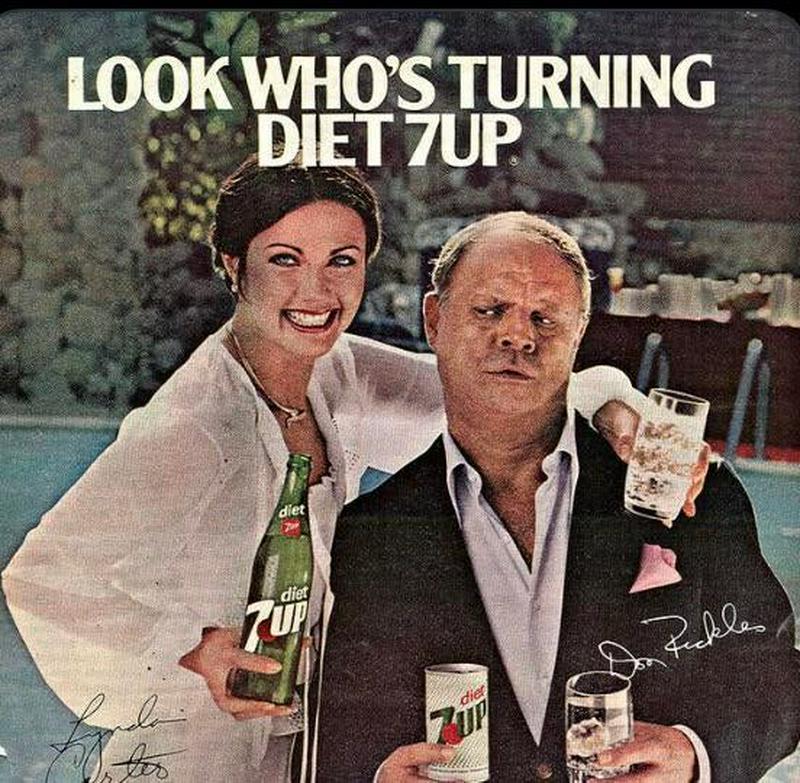
During her time on Wonder Woman, Carter also focused on numerous other creative projects, compiling a diverse portfolio of work. Thanks to her role on Wonder Woman as well as her national fame as a recent winner of Miss World, Carter was highly sought after for promotional work. In 1977, she signed a prestigious modeling contract with Maybelline. By 1979 when Wonder Woman ended, she was appearing on television commercials, including a huge campaign for Diet 7Up with Don Rickles. As the seventies drew to a close, Carter's star was still firmly on the rise.
Carter's first album, Portrait, was released in 1978 and featured original songs written by her

As her acting career flourished, Carter turned her attention to her first love, music. In 1978, she recorded a studio album, Portrait. Released in May of that year, Carter's debut album was a mix of original music and popular covers. It received a generally positive review, with critics agreeing that Carter had enough talent to be considered a serious musician. Two of her original songs from Portrait were featured on the imaginatively titled Amazon Hot Wax, a late season episode of Wonder Woman. Carter sang the songs herself, delighting audiences, many of whom were unaware of her musical talents. Carter later explained:
The funny thing is, once I started pursuing acting I was told not to tell anyone I was a singer because no one was interested in singers who wanted to act. So I didn’t tell anyone, and then after I had been acting for a while and began to search for a record deal people said, 'Oh, here’s another actor who thinks she can sing!'
Carter sings a duet with Welsh star Tom Jones during a 1979 musical variety show

During the seventies, musical variety shows dominated weekend night and holiday programming. Carter, whose passion for music and theatre blended together beautifully in this immensely popular niche, started working behind the scenes. She worked on several television specials in the late 70s, co-writing songs and choreographing showstopping dance routines. Carter also began performing in the specials, taking on supporting roles and performing musical numbers alongside some of the greatest legends of the day like Tom Jones and Kenny Rogers. Along the way, Carter learned the ropes of the production process, skills that she would later come to rely on.
1975 was a busy year for Carter as she embarked on a new career in voice acting

Carter also made her first foray into voiceover work around this time. Up until the mid-70s, men provided the vast majority of voiceovers, for everything from radio and television ads to newsreels and film trailers. Carter broke this male-dominated trend by becoming the first woman to ever record a voiceover for a movie trailer. In 1975, she was contracted to work on the promotional materials for The Drowning Pool, a dark and gritty thriller starring Paul Newman and Joanne Woodward. Although the movie wasn't a huge critical success, Carter's involvement opened up doors for women in voice acting.
Carter's first movie, the 1976 crime thriller Bobbie Jo and the Outlaw, was disturbingly violent

Carter had her big screen debut just a few months after she started on Wonder Woman, playing the lead role in the 1976 crime drama, Bobbi Jo and the Outlaw. Shot in New Mexico in early 1976, Bobbi Jo and the Outlaw is a wild, rambling tale about a group of young misanthropes who wander about committing a series of horrible crimes, inciting all manner of additional chaos along the way. Carter plays the titular character Bobbi Jo, an aspiring musician who decides to throw in her lot with the violent and volatile Lyle. Unfortunately for Carter's film career, the movie was a flop.
Carter was replaced by Colleen Camp in an iconic scene from Apocalypse Now

As her fame grew, Carter received more calls for movie auditions, mostly for small roles or cameo parts. In 1979, Carter was cast in Apocalypse Now as one of the Playboy bunnies who have to escape a USO performance by helicopter when the overly excited soldiers rush the stage. Carter was all set to shoot her scenes, but a storm battered the Philippines right before Coppola was due to start filming, decimating the carefully constructed sets. Carter couldn't wait for them to be rebuilt. She had to get back to filming what would be the final season of Wonder Woman.
Miss Piggy appears as Wonder Pig in a sassy homage to Carter's Wonder Woman
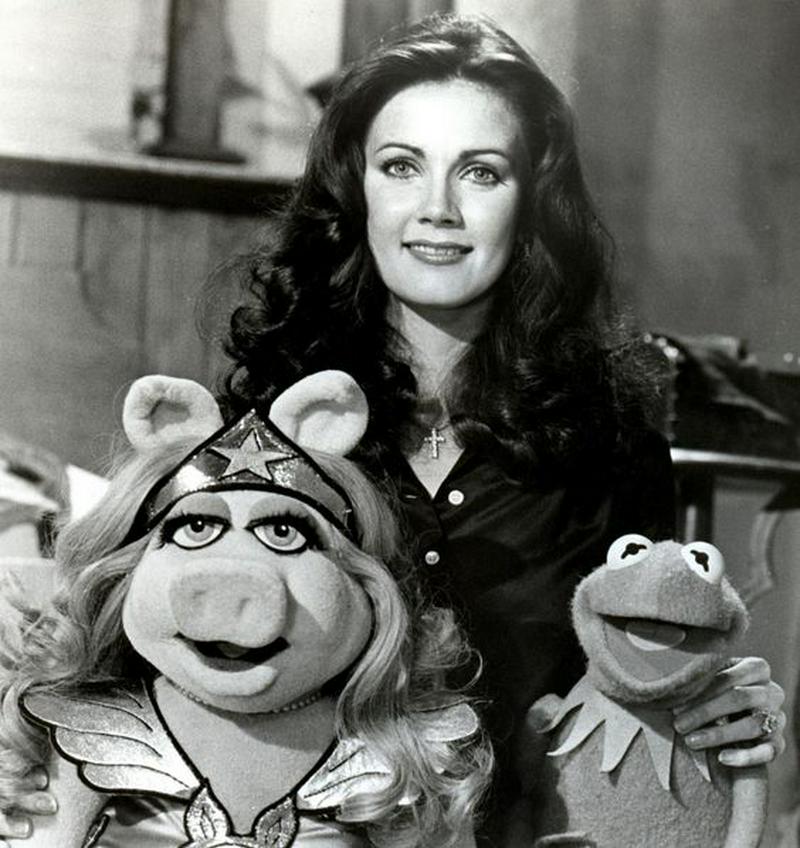
By the time Wonder Woman ended, Carter had already begun to make a name for herself in a diverse array of entertainment industry niches. She was well-liked, quickly earning a reputation for being a committed performer who was easy to work with. Her first television role after Wonder Woman ended was a guest spot on The Muppet Show, which aired on February 22, 1980. The Muppet Show had a regular viewership well into the millions across more than 100 countries. Carter's performance was nothing short of a triumph and won her a new fan base from around the world.
Carter's first variety show drew in huge audiences and was a massive ratings success
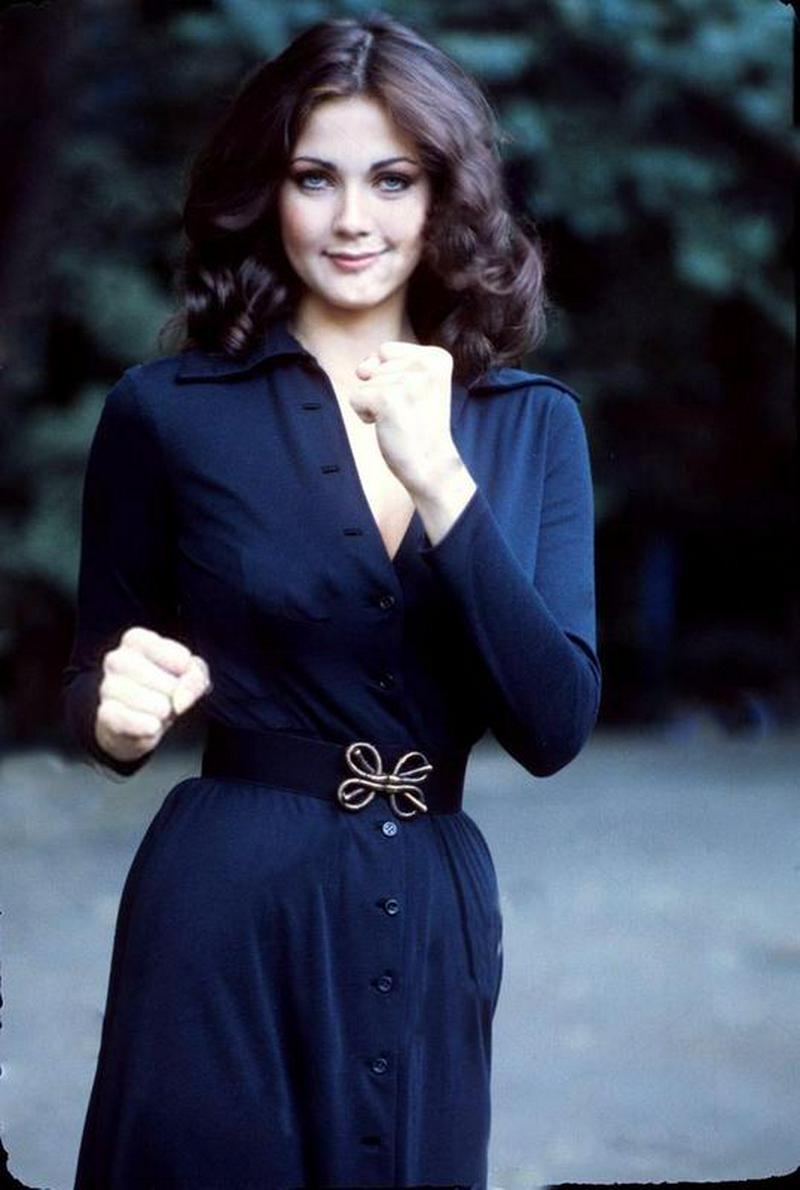
Her impressive performance in Wonder Woman and her reputation as a talented singer and dancer led to immediate offers for Carter to star in her own musical variety shows. They were conceived as one-off television specials, allowing Carter to have a greater hand in writing, directing and producing her own shows, a rarity for women in 70s Hollywood. Carter's first show was called Lynda Carter's Special. Airing in January 1980, just one month before Carter's appearance on The Muppet Show, it featured country superstar Kenny Rogers and Australian pop sensation Leo Sayer as special guests.
Encore! effortlessly embraced the campy vibe of early 80s stage productions and audiences loved it

Lynda Cater's Special was so successful that CBS ordered a follow-up show to air that fall. Simply titled Encore!, it featured Merle Haggard and Tom Jones as special guests. The showstopper performance was a wild musical dance number with cast members dressed up as pop culture characters, including an oversize Muppet and KISS-costumed backup dancers. Immensely successful, Encore! was followed up by three more carefully produced and widely anticipated specials. Celebration aired in 1981, followed by Street Life in 1982 and Body and Soul in 1984. As variety shows fell out of fashion in the late 80s, Carter turned her attention to other projects.
Carter gives a tour de force performance in the 1983 biopic, Rita Hayworth: A Love Goddess

Carter landed her next lead role when she was cast in the 1983 television biopic, Rita Hayworth: The Love Goddess. Playing the titular role, Carter impressed audiences with her sensitive portrayal of Hayworth's tumultuous life. Fans also loved Michael Lerner's unflinching portrayal of domineering and manipulative studio exec, Harry Cohn, who controlled Hayworth while she worked for him. Touching as it did on Hayworth's unhappy marriages to Orson Welles and Prince Aly Khan of the Pakistani Nizari royal family, the movie attracted large audiences, drawn in by their intense curiosity about these larger-than-life Hollywood figures.
Carter and Anderson on the set of their short-lived detective show, Partners in Crime
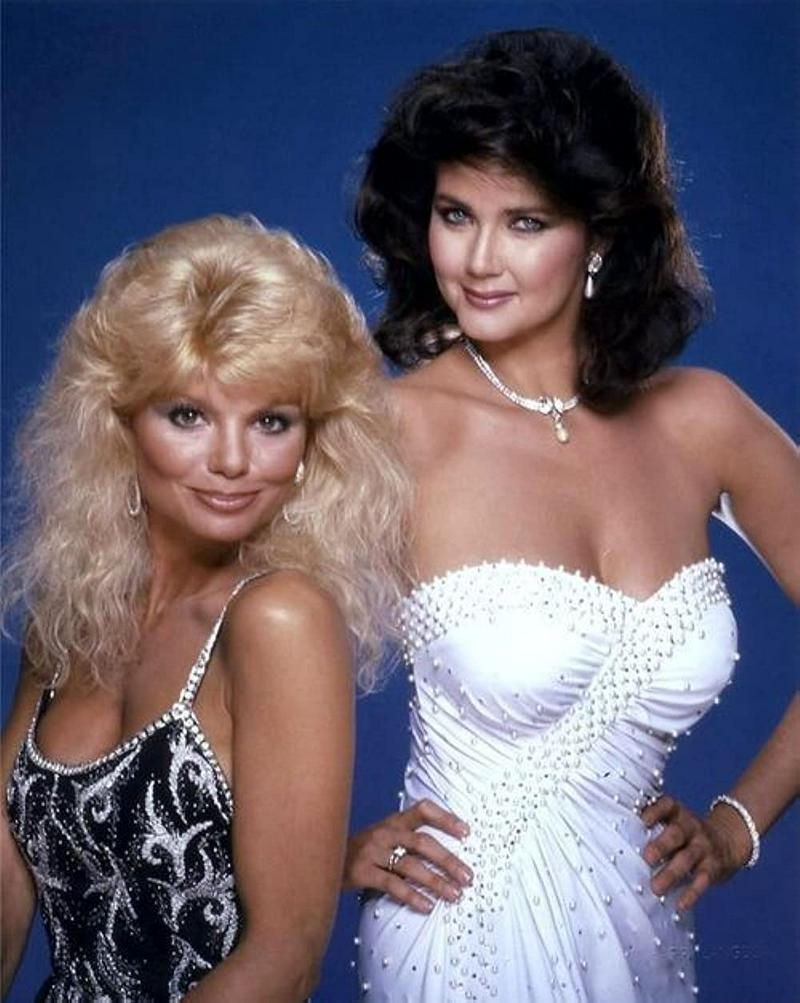
In 1984, Carter returned to television with her first lead role in a series since Wonder Woman. Costarring Loni Anderson, Partners in Crime was an early iteration of the female-led detective show genre which is now so common. It follows the adventures of two women who become amateur detectives when they get dragged into investigating the murder of their mutual ex-husband. Cancelled after only 13 episodes, Partners in Crime aired in the fall of 1984 on NBC. Although it was cancelled somewhat prematurely, critics praised both Carter's and Anderson's performances, with fans in America and the UK responding positively.
Carter took time off acting to focus on starting a family with her new husband

1984 was a very special year for Carter and not just because of all the strides she was making in her career. It was also the year that she married Robert A. Altman, the love of her life. After Partners in Crime was canceled, Carter decided to take a break from acting to support her husband, a high-powered Washington, D.C. lawyer. She moved to Potomac, Maryland where she and Altman built a gorgeous 20,000 square foot mansion. They soon welcomed son, James Altman, born in 1988, followed by daughter Jessica Carter Altman, born two years later in 1990.
CBS' adaptation of beloved fictional detective Mike Hammer was widely criticized by fans

Although Carter focused primarily on her family in the late 80s, she did take on a couple of movie roles. In 1989, she played the lead female protagonist in Mike Hammer: Murder Takes All, a CBS television movie adapted from the best-selling Mike Hammer novels by Mickey Spillane. The reviews were generally poor. While Carter's performance was praised, critics were put off by the crawling pace, poor story adaptation, and lead actor Stacy Keach's distracting portrayal of Hammer. Mostly notable for a small appearance by a young and completely unknown Jim Carrey, the movie was quickly and quietly shelved.
Promotional still from the 1991 movie, Daddy, starring Carter opposite Patrick Duffy

Carter returned to acting on a more full-time basis in the 90s, after the birth of her daughter. Her first new project was a star-studded 1991 made-for-TV movie called Daddy, an adaptation of Danielle Steele's best-selling novel of the same name. Starring in the lead role opposite Patrick Duffy of Dallas fame, Carter gave a riveting performance as an aspiring Broadway actress having to choose between love and her career. The movie also starred Kate Mulgrew as Duffy's estranged wife, along with Ben Affleck and Matthew Lawrence as Duffy's two young sons.
Carter fiercely defended second husband, Robert A. Altman during his scandalous fraud trial

Carter starred in seven more television movies over the next decade, averaging one or two a year. However, she took a break from acting in 1992 to focus on her family in the midst of her husband's trial for financial fraud and money laundering. Altman's trial stemmed from a multinational investigation into the secret dealings of the Bank of Credit and Commerce International. It was a shocking financial scandal and Altman's trial generated great public interest. When he was acquitted in 1993, Carter famously embraced him in front of a scrum of reporters, jubilantly shouting "Not guilty! Not guilty!".
Shot in British Columbia, Hawkeye was a visually stunning production that won critical acclaim

With the trial behind her, Carter returned to acting with a passion. She immediately got to work on what would be her only feature film of the decade. Released in 1993, Lightning Bolt failed to impress audiences and Carter herself disliked the finished product. The next year, Carter was cast as Elizabeth Shields in the new TV series Hawkeye. Based on James Fenimore Cooper's Leatherstocking Tales, the plot revolves around Elizabeth's efforts to free her husband from his French captors with the help of Hawkeye, Cooper's famous protagonist. Despite critical acclaim, Hawkeye was canceled after only one season.
With her piercing blue eyes, Carter was the ideal spokeswoman for corporate giant, Lens Express

The 90s also saw Carter expand her career with a resumption of her voiceover work, narrating the audiobook version of Sandra Brown's suspenseful romance thriller, Where There's Smoke. She also signed a lucrative new endorsement deal with eyecare giant Lens Express, better known today as 1-800-Contacts. However, Carter focused most of her efforts on her passion project, the creation of her own company, Potomac Productions, established on March 16, 1999. By the time the 90s came to a close, Carter was firmly established as a successful actress and musician, and the coming decade would only see her career expand.
When Wonder Woman was syndicated in the early 2000s, Carter found a whole new fan base

The start of the 2000s saw a resurgence of popular interest in first generation sci-fi and superhero television shows. It was also the golden age of cable, with hundreds of genre specific channels taking over the airwaves. Wonder Woman was syndicated on several of these competing networks, including Syfy, which even then boasted viewership numbers well into the millions. Dedicated science fiction and comic book fans were reintroduced to Lynda Carter, and they were hooked. The show quickly became a new cult classic, and Carter found herself in more demand than ever.
Carter vowed audiences with her big return to the silver screen in The Dukes of Hazzard remake

What followed was a decade of almost non-stop work in television and video game voiceovers, mostly on the Elder Scrolls series. She also worked on several independent and low budget movies during the 2000s that became cult classics, including the police comedy Super Troopers. One of her most memorable roles from this period was as a rundown ex-beauty queen in the hilariously dark 2004 comedy horror, The Creature of the Sunny Side Up Trailer Park. However, Carter's biggest role of the decade came in the blockbuster 2005 remake of The Dukes of Hazzard, playing Uncle Jesse's love interest, Pauline Powers.
Carter's 2009 studio album, At Last, won rave reviews, climbing to No. 10 on the charts

After filming for The Dukes of Hazzard wrapped, Carter returned to her musical and theater roots. She headed to London, where she starred as Mama Morton in a West End production of Chicago. After a two-year tour for An Evening with Lynda Carter, her one-woman cabaret, she went back to recording music, releasing her first new album in decades. At Last, released in 2009, soared to No. 10 on the U.S. Billboards in the jazz category. Her latest album, Red Rock n' Blues, was released in 2018. Carter continues to tour and perform music with her band.
Carter's family were instrumental in her recovery from alcohol addiction

Throughout her stellar career, Carter had her own struggles to deal with, particularly a years-long battle with alcoholism. She finally entered rehab in 1998 with the encouragement and support of her husband, Robert. Sober now for over 20 years, Carter credits the love of her family with her recovery, admitting that she still works daily on her sobriety. She told People:
I was so good at hiding [her alcoholism]. My husband asked me … ‘Can’t you just stop this for the children and for me?’ I needed help – I begged God in heaven to help me figure this out.
Today, Carter travels the country talking about the crucial role of family acceptance and support in achieving and maintaining sobriety. In 2021, Carter lost her beloved husband to myelofibrosis, a rare and aggressive form of bone marrow cancer.
Carter assumes her famous Wonder Woman pose as she accepts her Star on the Walk of Fame

A longtime activist, Carter advocates for the LGBTQIA+ community, serving as the Grand Marshal for the New York and D.C. Pride Parades in 2011. She also campaigns for abortion rights and helps fundraise for the Susan G. Komen Fund among others. On April 3, 2018, Carter was honored with her own Star on the Hollywood Walk of Fame in recognition of her immense contribution to film and television over the years. With her epic work in the first female-driven superhero show on television, Carter opened the door for all the female action heroes that came after her.
